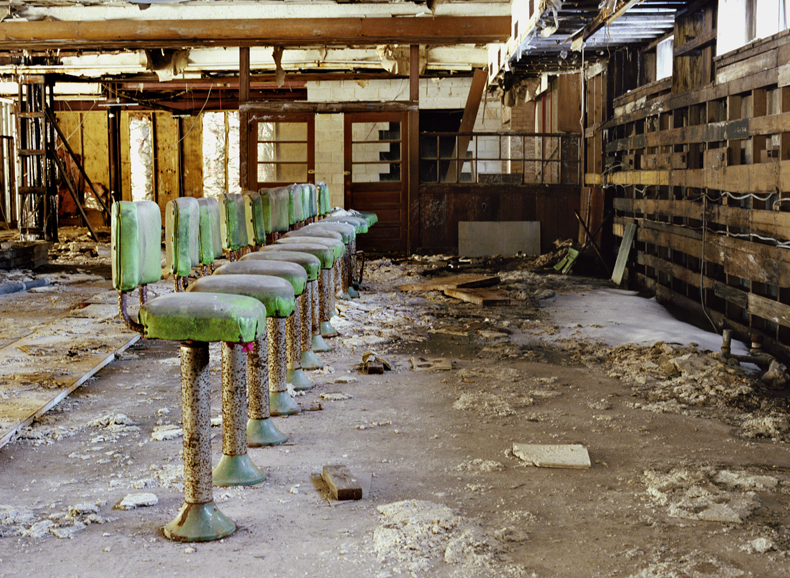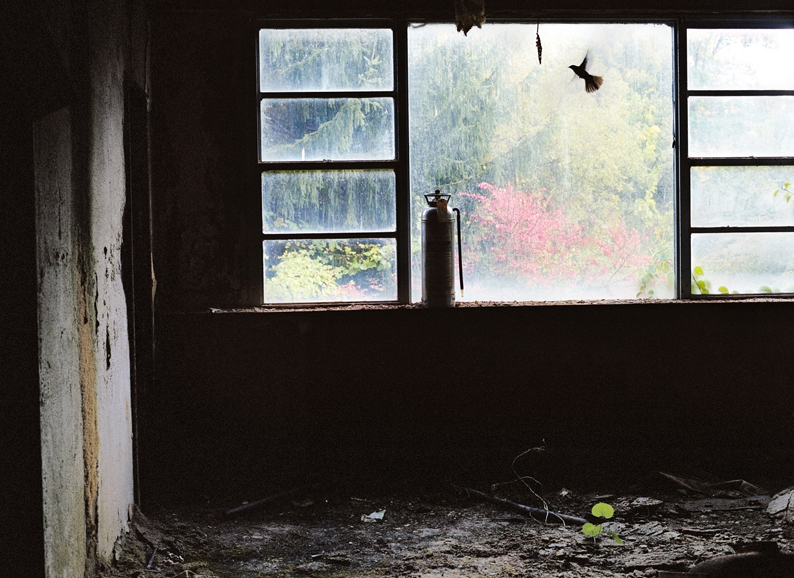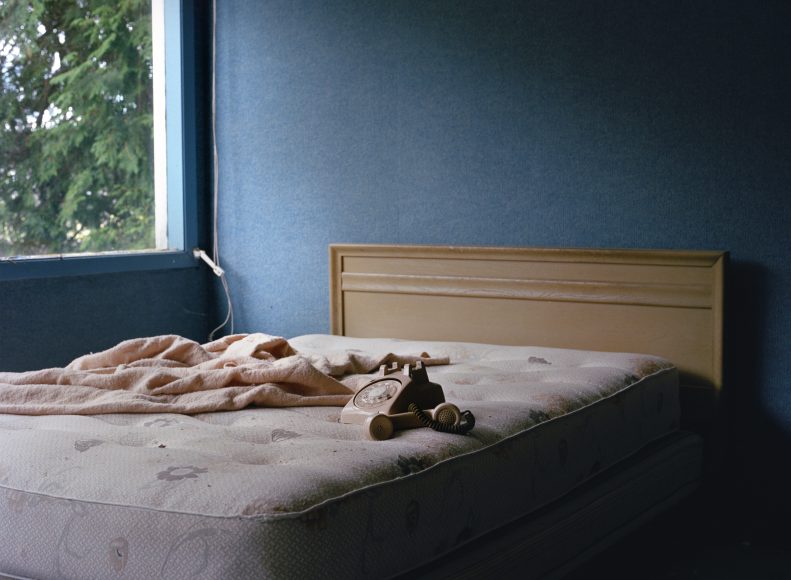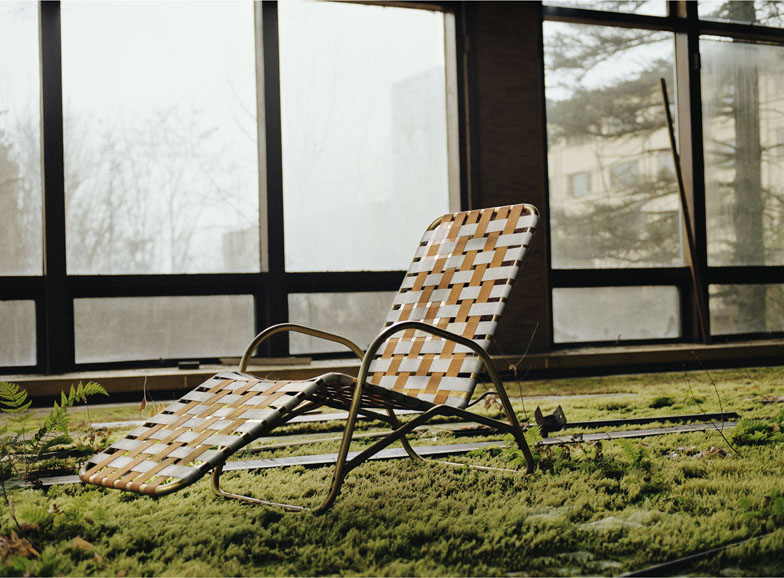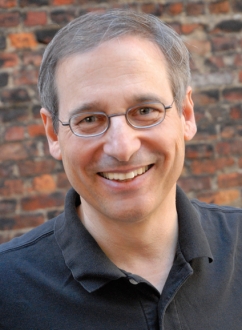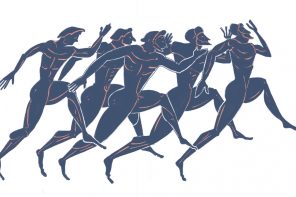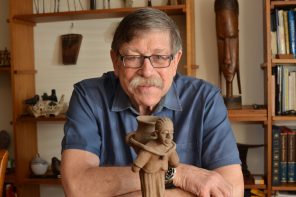Marisa Scheinfeld has been trekking around Sullivan County for five years, photographing abandoned and decaying hotels and studying the power of time, nature and people on the once vibrant Borscht Belt — as the Catskill Mountains entertainment scene was affectionately known.
Documenting how the region has changed has changed her.
“I look at time differently now,” she said. “I look at mortality differently. I look at people differently.”
On Oct. 4, Cornell University Press will publish her book, “The Borscht Belt: Revisiting the Remains of America’s Jewish Vacationland.” It features 129 photographs of 40 hotels and bungalows, as well as essays by Scheinfeld, historian Jenna Weissman Joselit and author Stefan Kanfer.
More than 500 hotels and resorts were built in the Catskill Mountains, beginning in the 1920s, an era of rampant anti-Semitism when Jews were often banned from hotels.
The resorts began to decline in the mid-1960s. Perhaps it was the development of places modeled on the Borscht Belt, like Las Vegas and Atlantic City, that signaled the end, Scheinfeld said. Or the expansion of the airline industry, enabling people to fly to far-off destinations. Or anti-discrimination laws that opened up accommodations for Jews.
Scheinfeld grew up in the Catskills. In 1986, her family moved from Brooklyn to Kiamesha Lake, between the fading Kutsher’s Hotel and Country Club and the Concord Resort Hotel.
“We were never guests of the hotels,” she said. “We just walked around as if we were. We swam and played bingo and did the quintessential Borscht Belt activities.”
She moved away to pursue her career, studying photography at the State University of New York at Albany, working at the Museum of Photographic Arts in San Diego and earning a master of fine arts at San Diego State University.
When it came time to do her master’s thesis, she followed a mentor’s advice: Shoot what you know.
“That’s what compelled me to start the project,” she said.
She studied old photographs and drove around thinking about the landscape. She collected old postcards, figuring out exactly where they were taken and then replicated the scenic views for before-and-after diptychs.
Ruins entranced her. They are romantic and sad. They reveal history and hint at a vibrant place and time. Finding them is an adventure.
“It’s amazing what time does to places,” she said, “how they change, how they stay the same, these beautiful hotels and these ruins of hotels.”
Swimming pools have become ponds filled with frogs and fish. Showroom carpets have yielded to moss. Ferns grow out of foundations.
It’s not just that nature has replaced the architecture. People have also left their marks.
Squatters have taken over buildings. Paintballers battle among the wreckage. Youths have converted stages to skateboard parks.
She has taken many of her prints on the road in a traveling exhibit. Old Borscht Belters often see the images as bittersweet.
“They say this is so sad. But minutes later their eyes light up and they tell me a story about the same place, about a birth or a wedding or some milestone celebrated there.”
She went back to the same places dozens of times, season by season, as different colors and contrasts and stages of growth were revealed. Even structures changed — expanding, contracting, cracking, leaking and buckling.
“The process of time is what I am most interested in,” she said. “So I had to devote time to it.”
Using film rather than the immediacy of digital photography enabled her to slow down the process, to think more about composition, look for the best angle, choose the truest frame. She never touched, moved or manipulated anything. She set her Pentax 645 on a tripod, checked the light meter and, using only natural light, captured the best exposure.
When she shot locations she had visited as a child, she went about her craft methodically. But the scenes unearthed memories and afterward left her devastated.
Walking through Kutsher’s, she saw the pool table on which her grandfather, Jack Scheinfeld, taught her to play.
“It brought back memories of my aging parents and a longing for people no longer here.”
Now she lives in Waccabuc. She has honed her craft. She fell in love and got married. She became a happier person.
Chronicling the past also gave her a sense of the ebb and flow of time, and that makes her optimistic. Sullivan County has seen economic disruption and recovery before, she said, and its natural beauty endures.
She sees signs of revitalization — a bed and breakfast here, a yoga center there, New Yorkers spending the weekends.
“I hope that in some way my project causes people to rethink this place.”

